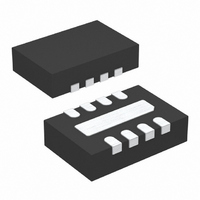LT3080EDD-1#PBF Linear Technology, LT3080EDD-1#PBF Datasheet - Page 10

LT3080EDD-1#PBF
Manufacturer Part Number
LT3080EDD-1#PBF
Description
IC REG LDO ADJ 1.1A 8-DFN
Manufacturer
Linear Technology
Datasheet
1.LT3080EDD-1PBF.pdf
(24 pages)
Specifications of LT3080EDD-1#PBF
Regulator Topology
Positive Adjustable
Voltage - Output
0 ~ 36 V
Voltage - Input
1.2 ~ 36 V
Voltage - Dropout (typical)
1.35V @ 1.1A
Number Of Regulators
1
Current - Output
1.1A
Current - Limit (min)
1.1A
Operating Temperature
-40°C ~ 125°C
Mounting Type
Surface Mount
Package / Case
8-DFN
Lead Free Status / RoHS Status
Lead free / RoHS Compliant
Available stocks
Company
Part Number
Manufacturer
Quantity
Price
LT3080-1
Extra consideration must be given to the use of ceramic
capacitors. Ceramic capacitors are manufactured with a
variety of dielectrics, each with different behavior across
temperature and applied voltage. The most common
dielectrics used are specifi ed with EIA temperature
characteristic codes of Z5U, Y5V, X5R and X7R. The Z5U and
Y5V dielectrics are good for providing high capacitances
in a small package, but they tend to have strong voltage
and temperature coeffi cients as shown in Figures 2
and 3. When used with a 5V regulator, a 16V 10μF Y5V
capacitor can exhibit an effective value as low as 1μF to
2μF for the DC bias voltage applied and over the operating
temperature range. The X5R and X7R dielectrics result in
more stable characteristics and are more suitable for use
as the output capacitor. The X7R type has better stability
across temperature, while the X5R is less expensive and is
available in higher values. Care still must be exercised when
using X5R and X7R capacitors; the X5R and X7R codes
only specify operating temperature range and maximum
APPLICATIONS INFORMATION
10
Figure 3. Ceramic Capacitor Temperature Characteristics
Figure 2. Ceramic Capacitor DC Bias Characteristics
–100
–100
–20
–40
–60
–80
–20
–40
–60
–80
40
20
20
0
0
–50
0
BOTH CAPACITORS ARE 16V,
1210 CASE SIZE, 10μF
–25
2
4
DC BIAS VOLTAGE (V)
0
TEMPERATURE (°C)
BOTH CAPACITORS ARE 16V,
1210 CASE SIZE, 10μF
6
25
8
Y5V
X5R
50
10
Y5V
75
12
X5R
100
14
30801 F02
3080 F03
125
16
capacitance change over temperature. Capacitance change
due to DC bias with X5R and X7R capacitors is better than
Y5V and Z5U capacitors, but can still be signifi cant enough
to drop capacitor values below appropriate levels. Capacitor
DC bias characteristics tend to improve as component
case size increases, but expected capacitance at operating
voltage should be verifi ed.
Voltage and temperature coeffi cients are not the only
sources of problems. Some ceramic capacitors have a
piezoelectric response. A piezoelectric device generates
voltage across its terminals due to mechanical stress,
similar to the way a piezoelectric microphone works. For a
ceramic capacitor the stress can be induced by vibrations
in the system or thermal transients.
Paralleling Devices
LT3080-1’s may be directly paralleled to obtain higher
output current. The SET pins are tied together and the
IN pins are tied together. This is the same whether it’s in
three terminal mode or has separate input supplies. The
outputs are connected in common; the internal ballast
resistor equalizes the currents.
The worst-case offset between the SET pin and the output
of only ±2 millivolts allows very small ballast resistors
to be used. As shown in Figure 4, the two devices have
internal ballast resistors, which at full output current gives
4.8V TO 28V
V
IN
1μF
V
V
CONTROL
CONTROL
Figure 4. Parallel Devices
V
V
IN
IN
SET
SET
165k
+
–
+
–
LT3080-1
LT3080-1
25mΩ
25mΩ
OUT
OUT
30801 F04
10μF
30801fa
V
3.3V
2.2A
OUT















